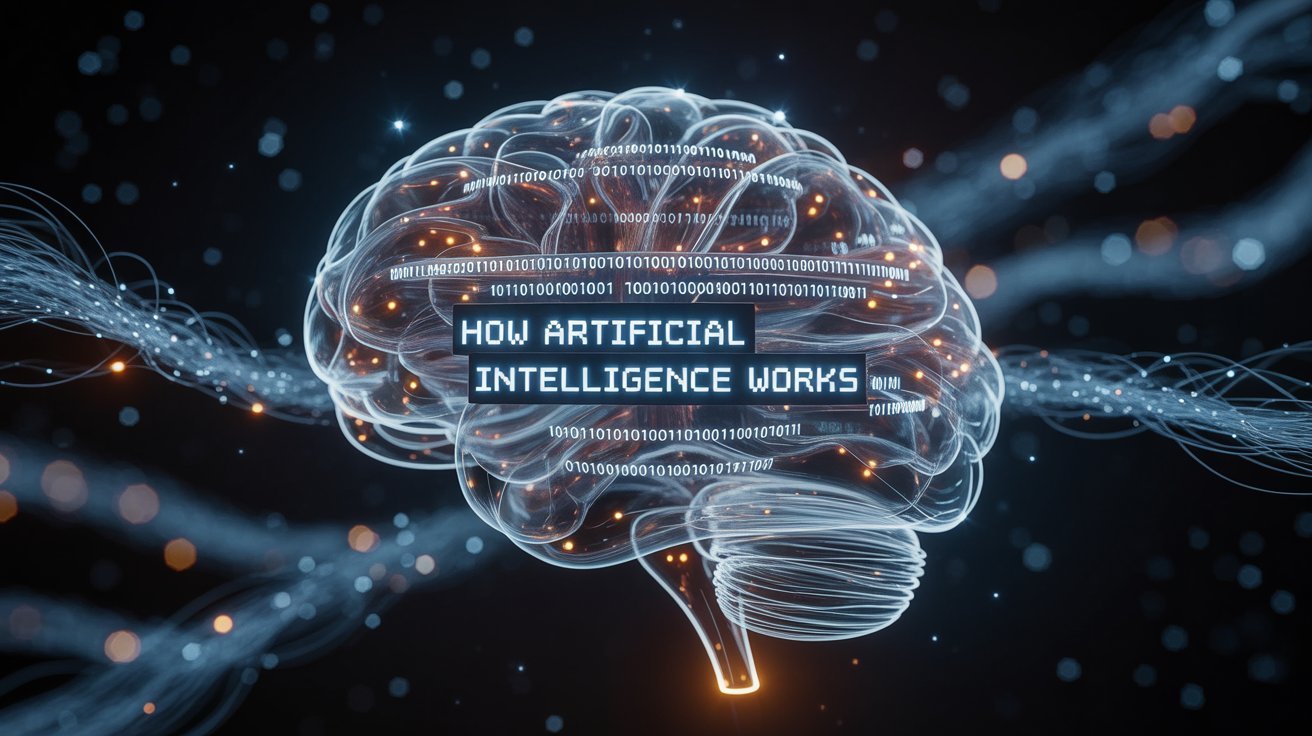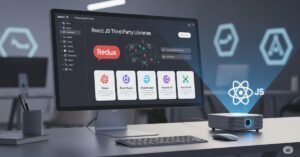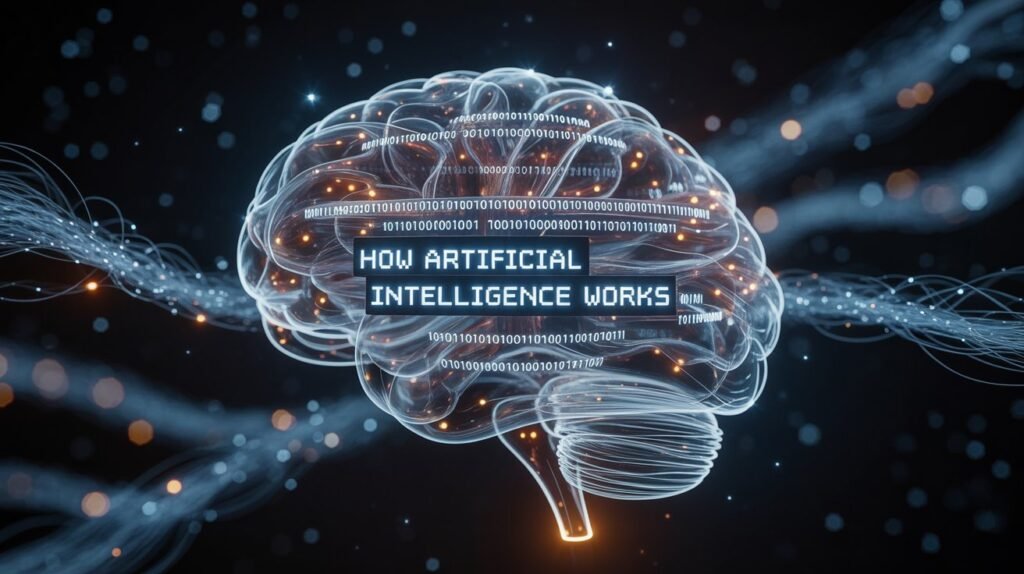
How does artificial intelligence work is likely the most exciting question of our time. Having entered an age in which machines do more than just obey but also learn, adapt, and make decisions, the world has ventured beyond science fiction. This is all too true and is shaping healthcare, learning, business, and entertainment.
Having an understanding of how artificial intelligence works assists in grasping why it’s transforming how we live. The process integrates data, algorithms, neural networks, and high-powered hardware. To better understand, there needs to be an exploration of the basics and observation of how overall components work together to make machines think.
The Core Concept of Artificial Intelligence
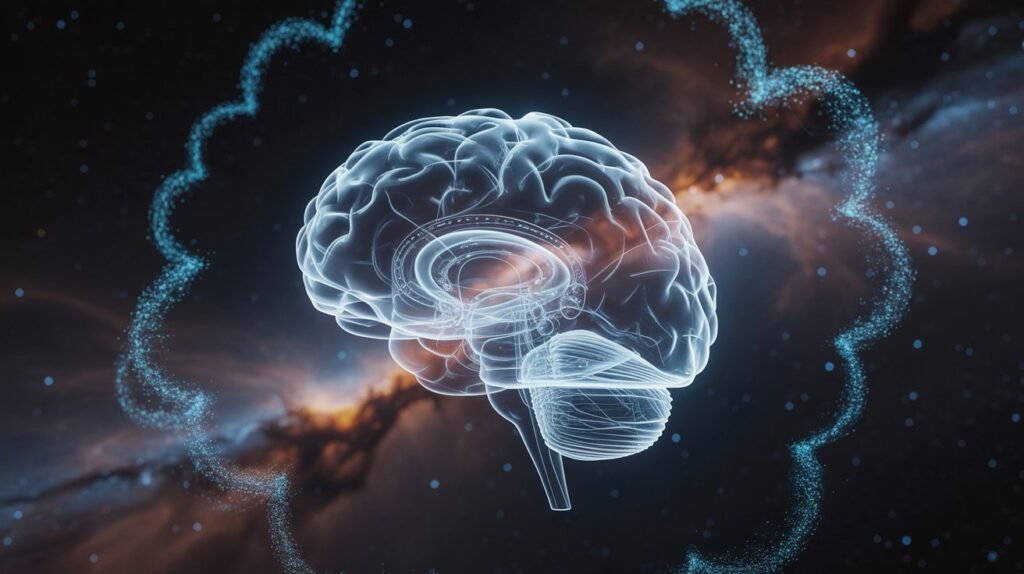
The basic principle of artificial intelligence is simple but solid. AI is basically all about training machines to replicate human thinking processes. Machines do not stick to strict rules but rather, they are educated about behavior and patterns.
AI processes in layers. It receives input such as images, voice, or text first. It then routes the information through algorithms that seek out structure and meaning. Ultimately, the system makes predictions or decisions.
Data: The Fuel Behind AI
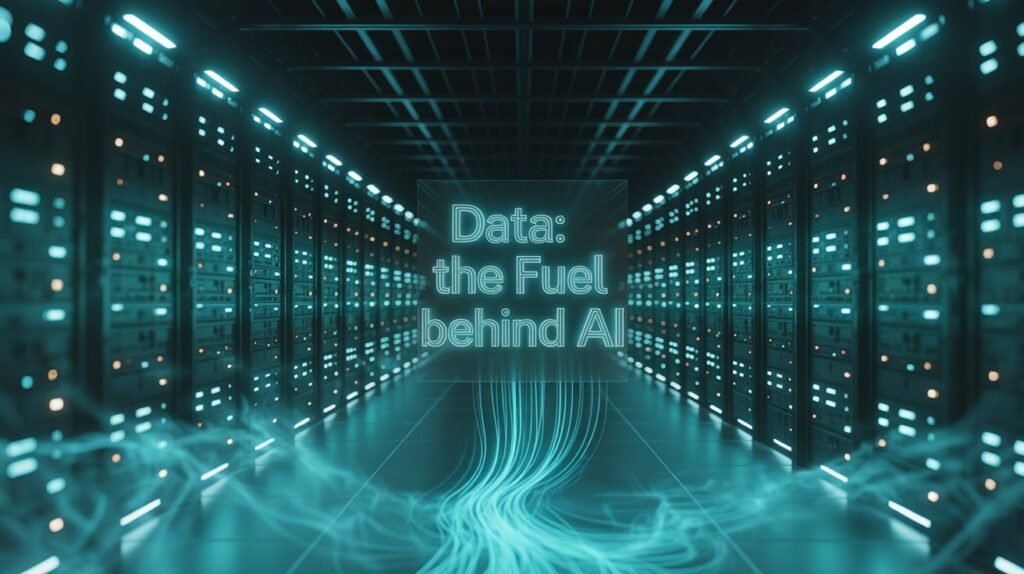
AI doesn’t do anything without data. Data is the fuel that energises all artificial intelligence platforms. When you use Google Maps, go shopping online, or watch Netflix, the data that’s generated is what’s used to teach AI to improve. Huge data sets help machines spot trends.
There are also two forms of data.
Structured data is composed of numbers, tables, and formatted formats. There is also unstructured data, composed of text, images, audio, and video. AI software processes both, but it’s much harder to analyze.
Algorithms: The Brain of AI
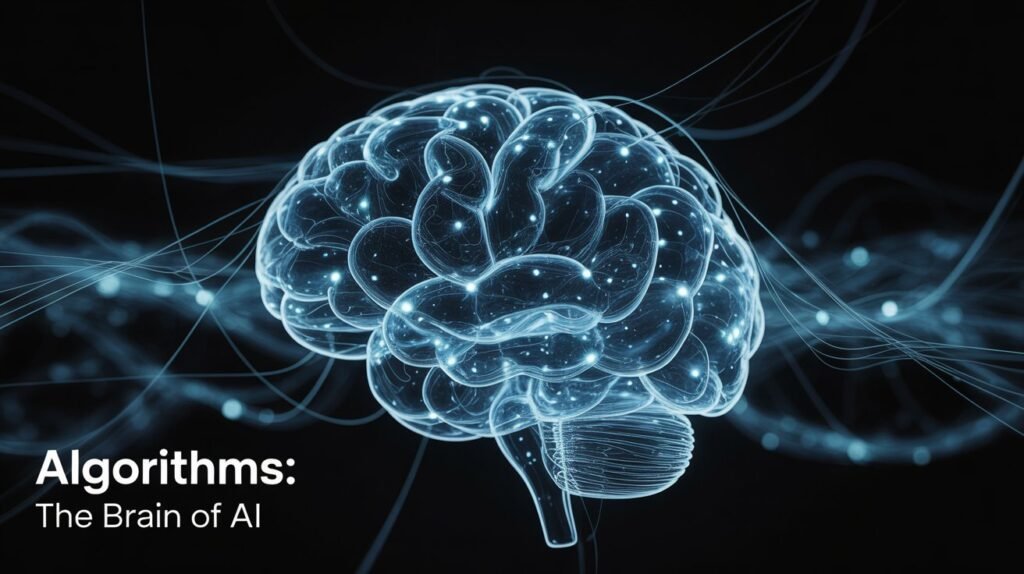
If data is the fuel, then algorithms are the brain. Algorithms are a series of instructions given to the machine on how to process data. In AI, the algorithms get smarter over time, getting better with each piece of information they are given. This is what makes AI adaptable.
Think of algorithms like recipes. They take raw material, data, and produce an end product, the prediction or decision. One employs varying algorithms to achieve varying things. Decision trees, for instance, are great with classification while clustering algorithms gather data that’s alike.
Neural Networks Explained
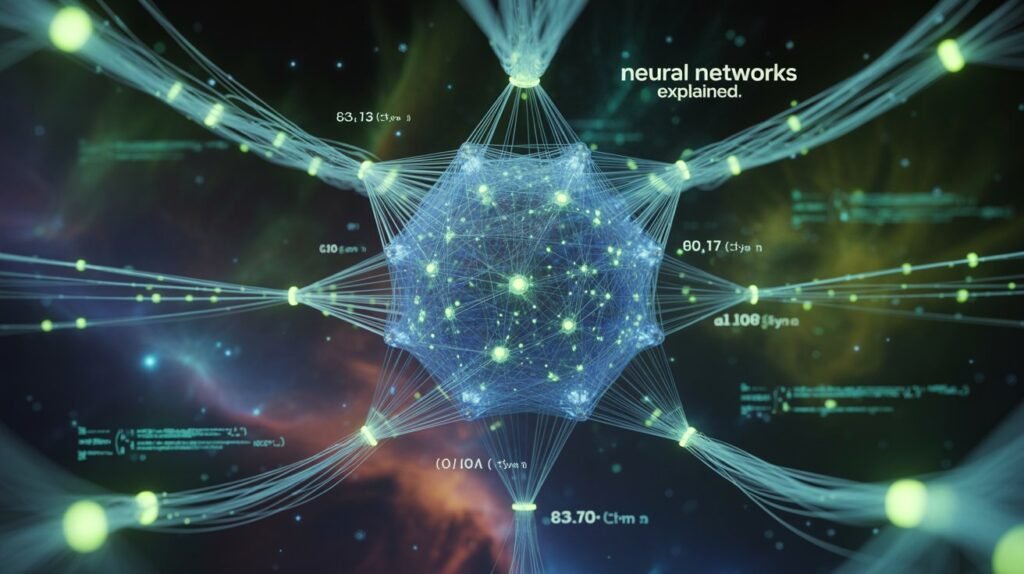
Neural networks are designed to mimic the working of the human brain. They consist of layers of nodes called neurons. Each of the neurons does a fraction of information processing and passes it to the next level. These layers operating together are capable of perceiving complex patterns.
For example, vision recognition software employs deep neural networks. One of the lower layers may spot simple shapes or lines or edges. Middle layers assemble these to recognize large patterns like eyes or wheels.
Types of Machine Learning

Machine learning is the foundation of why AI becomes intelligent. It is also categorized further. Supervised learning involves having a model trained on labelled data. For example, feeding the system with many pictures of cats and dogs so it can tell the difference.
Supervized learning uses labelled data.
The machine distinguishes things based on similarity, such as categorisation of customers based on purchasing behaviour. Reinforcement learning stands out. Reinforcement learning is trained through trial and testing on artificial intelligence, with positive rewards to correct actions.
Training and Testing AI Models

Training an AI model is like instructing a child. You present it with examples, correct errors, and allow it to practice. When the AI is being trained, it goes through huge amounts of data to look for patterns. This is the point when supervised and unsupervised learning comes in.
Training comes next after testing. A testing determines how the AI performs on new unseen data. This also assures the model does not memorize but generalizes what has been learned.
Hardware: The Muscles of AI

Central to all smart AI devices is solid hardware. AI needs solid computing power to process information and carry out complex algorithms. This is what CPUs, GPUs, and TPUs are designed for. In particular, GPUs are designed for parallel processing, and so they suit deep learning best.
Even cloud computing has transformed things. Google Cloud, AWS, and Azure offer scalable power with which we can train large AI models. Otherwise, creating something like ChatGPT, driverless cars, or advanced robots would never become possible.
Key Components That Make AI Work in Practice

AI programs have a number of elements to function in real life. You need data gathering and storage facilities first of all. Algorithms then work on such data, and neural networks look after deep level analysis. Hardware provides power to run everything efficiently.
These factors come together in applied instruments. Medical AI, for instance, uses patient data, diagnostic algorithms, and special-purpose hardware to diagnose illness faster than doctors do. AI uses customer data, recommendation algorithms, and cloud-based servers to make product recommendations in electronic commerce.
Challenges and Limitations of AI

AI can seem flawless on the surface but has several challenges. Data quality is a major challenge. If the data to train the AI is biased, then so will the AI be biased. This has the potential to cause unfair results, including discriminatory results in the selection of workers or lending results.
Another aspect is transparency. Neural networks present themselves like black boxes. They give outputs but do not explain how they got to them. This makes it impossible to trust AI in high-stake fields like healthcare or law.
The Future of How AI Works

The future of the operation of artificial intelligence is promising and uncertain. AI is moving towards intelligence with the ability to understand context, emotion, and human values. There are also possible future developments with AI from advancements in quantum computing.
Learn More :Why PHP is important for websites
The future is near and it’s going to consist of smarter assistants, better medicine devices, and AI working to fight climate change too. But with it comes more rules and ethics principles. The goal is to have AI more capable but also fair, transparent, and safe.
Types of Machine Learning
| Type | Description | Example Use Case |
| Supervised Learning | Uses labeled data for training | Email spam detection |
| Unsupervised Learning | Groups unlabeled data by similarity | Customer segmentation |
| Reinforcement Learning | Learns by trial and error with rewards | Self-driving cars, robotics |
AI Hardware
| Hardware | Function | Example Platform |
| CPU | General processing tasks | Basic computing |
| GPU | Parallel data processing | Deep learning training |
| TPU | Optimized for AI models | Google AI infrastructure |
AI Challenges
| Challenge | Description | Impact Example |
| Data Bias | Poor quality or biased training data | Discrimination in hiring |
| Black Box Models | Lack of transparency in decisions | Medical misdiagnosis risks |
| Ethics | Privacy and misuse concerns | Surveillance issues |
FAQ”s
What is the basic idea of how artificial intelligence works?
Artificial intelligence works by combining data, algorithms, and powerful computing resources to simulate human reasoning, learning.
Why is data so important for AI?
Data trains AI algorithms. AI does not learn or provide accurate predictions without data.
What role do neural networks play in AI?
Neural networks process complex information in layers similarly to a human brain processing information.
Can AI make mistakes?
Yes. If data is biased or poorly trained models are used, then AI may give erroneous or discriminatory results.
What is the future of AI?
The future of artificial intelligence is expected to bring smarter systems capable of advanced decision-making.
Conclusion
Understanding how artificial intelligence is built helps explain why it is revolutionizing the world so quickly. It combines data, algorithms, neural networks, and software and hardware to mimic human intelligence. While the future is bright, AI also presents serious challenges such as bias and moral hazard. However, with careful research and due application, how artificial intelligence is built will continue to transform industries and elevate life all over the world.

